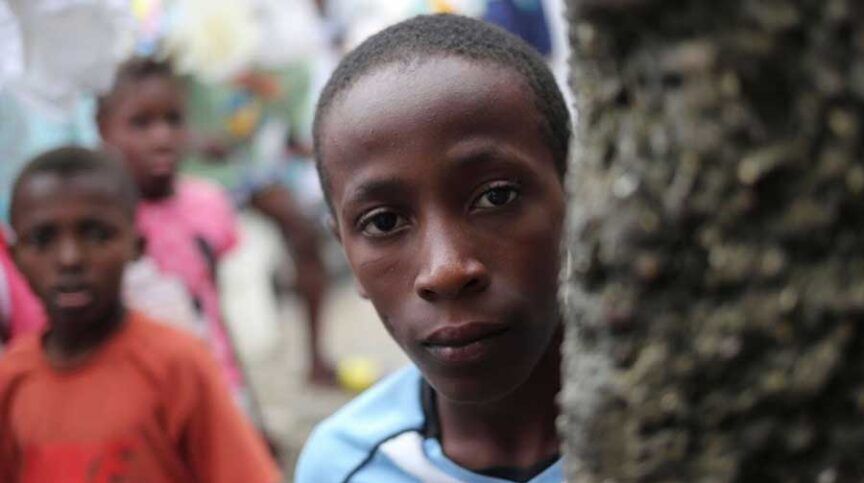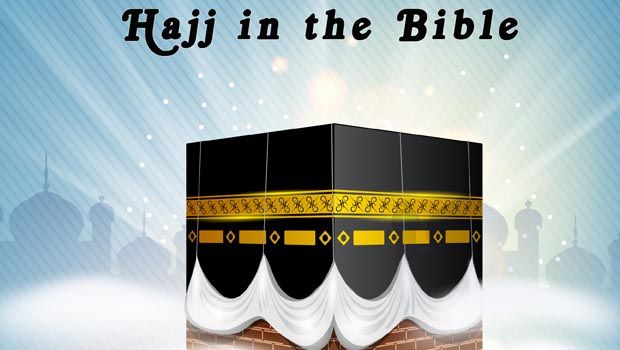Those unfamiliar with religious history or cartography know little about the ancient designation of one of the recognized cradles of civilization — Palestine. It was not until 5 BCE, however, that the area was uniformly called and subsequently identified on maps as Palestine. The Greek historian Herodotus is reputed to have popularized the name of the region, a land that would come to be seared into the collective consciousness in the mid-20th century.
Britain ruled Palestine starting in 1917 and in 1922 the League of Nations approved their rule through the British Mandate which lasted until 1948. On November 29, 1947, the General Assembly of the United Nations passed Resolution 181 that recommended the partition of Palestine into Arab and Jewish states. We should note that General Assembly resolutions are non-binding, with no enforcement mechanisms. Thus, when someone says that the U.N. established the state of Israel, they are inaccurate. Arabs in Palestine and the governments of Egypt, Syria, Iraq, and Saudi Arabia denounced the partition of Palestine. While some think the Palestinians lost that original chance for a bona fide two-state solution, the facts speak to another reality. The founding Zionists, including Theodore Herzl, saw the establishment of a Jewish state as a colonialist project, in lockstep with the European colonialism of the time which, by definition, aimed for territorial expansion. Herzl wrote to Cecil Rhodes in 1902, asking for advice and support for the Zionist project. Rhodes, who became the prime minister of British South Africa (then called the Cape Colony) in 1890, was an avowed racist and imperialist who believed that the British should rule the world. Herzl wrote to Rhodes, “How, then, do I happen to turn to you, since this is an out-of-the-way matter for you? How indeed? Because it [the Jewish settlement in Palestine] is something colonial” (The Complete Diaries of Theodore Herzl). Territorial expansion is part of the colonialist project. It is absurd to think that the Palestinians would agree to their own dispossession.
Sacred buildings stand tall in Jerusalem in what is commonly described as the Holy Land. Yet, the systemic oppression of the Palestinian people debases the land, the people, and the principles of international law.
A number of massacres took place starting in 1948, the most well-known one being in the village of Deir Yassin on April 9, 1948, where more than 100 civilian villagers were mercilessly killed. Those who have read widely about the origins of the state of Israel see no other reality than the Zionist intention to expand their territory and expel the indigenous population, using whatever means were necessary. Between 500 and 600 Palestinian villages were destroyed and roughly 750,000 Palestinians became refugees. The 1967 War has been characterized as a necessary war for Israel, defending itself from Egyptian forces mobilizing in the Sinai. Menachem Begin, prime minister in 1982, stated in a speech, “In June 1967, we had a choice. The Egyptian Army concentrations in the Sinai approaches (did) not prove that Nasser was really about to attack us. We must be honest with ourselves. We decided to attack him.”
During this war, Israel occupied Jerusalem, the West Bank, Gaza, and the Syrian Golan Heights. The U.N. Security Council passed Resolution 242 on November 22, 1967, “Emphasizing the inadmissibility of the acquisition of territory by war and the need to work for a just and lasting peace in which every State in the area can live in security…” The resolution called for Israel to withdraw from Palestinian land taken during the war. In defiance of the United Nations and world opinion, Israel declared at that time that, “East Jerusalem is part of our eternal, undivided capital.” Its repeated failure to comply with dozens of U.N. resolutions over the last seven decades, as well as its ongoing human rights abuses, has resulted in Israel being viewed by critics as an apartheid state, one which is content to maintain an occupation without end.
Demographics
In 1881, before the rise of political Zionism, the Muslim population of Palestine was 86.6 percent, Christians constituted 9.1 percent of the population, and non-Zionist Jews represented only 2.8-4.3 percent. By 1947, the Jewish population had grown to 33 percent of Palestine’s population while the Muslims had fallen to 58 percent and Christians 7.9 percent. In 1947, Jews owned just 6 percent of the land. Palestinian refugees and their descendants are today more than seven million, many of whom remain in refugee camps, denied their right to return to their land and homes. Meanwhile, there are roughly 750,000 illegal settlers in occupied Palestine today, living in 250 settlements. The settlements are promoted, built, and paid for by the Israeli government. Jews are offered many incentives such as subsidized housing to go live in the settlements. The larger settlements have schools, medical centers, and malls. In contrast, as many as three generations of Muslim family members can be found existing in squalid, water-deprived camps where their physical mobility is often limited by in-camp curfews and armed patrols riding in machine gun mounted jeeps. Acts of civil disobedience and protest by children as young as 10 years old frequently result in arrest and detention.
With an estimated population of over 2 million people, Gaza is recognized as being the most densely populated place on earth. It is frequently referred to as the largest “open-air prison” on the planet. The Israeli government has imposed a suffocating air, land, and sea blockade on Gaza since the early 1990s. The blockade has at times restricted shipments of food, baby formula, medicine, building supplies, and clothing from entering Gaza. Gaza and West Bank residents are subjected to random stoppages of potable water for hours or even days at a time by Israel. Fresh water is often diverted from Muslim-populated camps and villages to Jewish settlements, kibbutzim, and even water parks. The denial of access to clean drinking water and proper sanitation is a human rights violation.
Jerusalem
There is arguably no other city in the world like Jerusalem where the practitioners of the Abrahamic faiths, Judaism, Christianity, and Islam converge in their respective sacred, hallowed spaces to commune with the Divine. Haram al-Sharif (the Noble Sanctuary) is a 35-acre site and is for Muslims the third most sacred space in all of Islam, with the Kaabah in Makkah, Saudi Arabia and Masjidul Nabi (Mosque of Prophet Muhammad) in Madinah, Saudi Arabia being the first and the second. Masjidul Aqsa, located on the site in Jerusalem, is believed by all Muslims to be where Prophet Muhammad (peace be upon him) embarked on a Night Journey from Makkah to Jerusalem, returning to Makkah in one night after leading other noble prophets in prayer inside that sacred sanctuary. Before returning to Makkah on a winged animal named Buraq, Prophet Muhammad (pbuh) stood on a rock that is located inside the Dome of the Rock, journeyed through the seven heavens where he met, on different levels, various prophets including Moses, Abraham, and Jesus (peace be upon them all). Arriving in the highest level, Prophet Muhammad entered the Divine Presence and received the command about the daily prayers.
The Jewish community refers to the same area as the Temple Mount. Jews believe that the first temple was built on the current site of al-Aqsa Mosque by Prophet Solomon in 957 BCE and that the Ten Commandments were in a special room on that site. Both Jews and Christians believe that Prophet Abraham (pbuh) offered to sacrifice his son Isaac (Islam teaches that it was Ishmael who was offered for sacrifice) to the Creator on the rock inside the Dome of the Rock. Within a relatively short distance of these sites is the Church of the Holy Sepulchre, the place where Christians believe that Jesus (pbuh) was crucified, buried, and ascended to the heavens after three days. The Wailing Wall, also called the Western Wall, abuts the Haram al-Sharif (Temple Mount). The Wailing Wall is the holiest place for Jews because of its proximity to the Temple Mount where they have not, until recently, been allowed to pray. Increasingly, Israeli settlers, accompanied by police, have been allowed to pray and even hold short services inside both Masjidul Aqsa and Dome of the Rock. This practice has caused increased tensions and caused a number of altercations between Jewish settlers and Muslim worshippers.
Trump’s ‘Peace’ Plan
On January 28, 2020, an about-to-be impeached president, Donald Trump, and a criminally indicted Israeli prime minister, Benjamin Netanyahu, announced what many believe to have been a dead on arrival plan for a two-state solution for Israel and Palestine. Trump’s son-in-law, Jared Kushner, is credited with helping to broker the Plan, a plan about which the Palestinians were never consulted. In an opinion piece in the New York Times, Nathan Thrall, a senior analyst with the International Crisis Group, wrote on January 29, “The Trump plan, much like the decades-long peace process that it crowns, gives Israel cover to perpetuate what is known as the status quo: Israel as the sole sovereign controlling the territory between the Jordan River and the Mediterranean Sea, depriving millions of stateless people of basic civil rights, restricting their movement, criminalizing speech that may harm ‘public order,’ jailing them in indefinite “administrative detention’ without trial or charge, and dispossessing them of their land — all while congressional leaders, the European Union and much of the rest of the world applaud and encourage this charade, solemnly expressing their commitment to the resumption of ‘meaningful negotiations.”
Michael Lynk, U.N. Special Rapporteur on the situation in Palestinian Territories described the plan as being lopsided and that it will only entrench occupation. “The US plan offers a one and a half state solution. It is not a recipe for a just and durable peace, but rather it endorses the creation of a 21st century Bantustan in the Middle East” (Bantustans were the lands reserved for black South Africans during that nation’s apartheid era; the Bantustans had limited self-government). The proposed Palestinian state would be fragmented across several regions that are miles apart. The plan calls for new roads, tunnels, and bridges to connect the areas together. The plan proposes the Israeli annexation of the Jordan Valley, the breadbasket of the West Bank. Prior to the announcement, the Trump Administration had stopped all donations to the U.N. Relief and Works Agency for Palestine Refugees in the Near East (UNRWA) which provides services and aid to refugees; he also stopped aid to the Palestinian Authority. Michael Lynk continued, “The Palestinian statelet envisioned by the American plan would be a scattered territory, completely surrounded by Israel with no external borders, no control over its airspace, no right to defend its security, no geographical basis for a viable economy, no freedom of movement, and with no ability to complain to international judicial forums against Israel or the United States.”
Sacred buildings stand tall in Jerusalem in what is commonly described as the Holy Land. Yet, the systemic oppression of the Palestinian people debases the land, the people, and the principles of international law.






